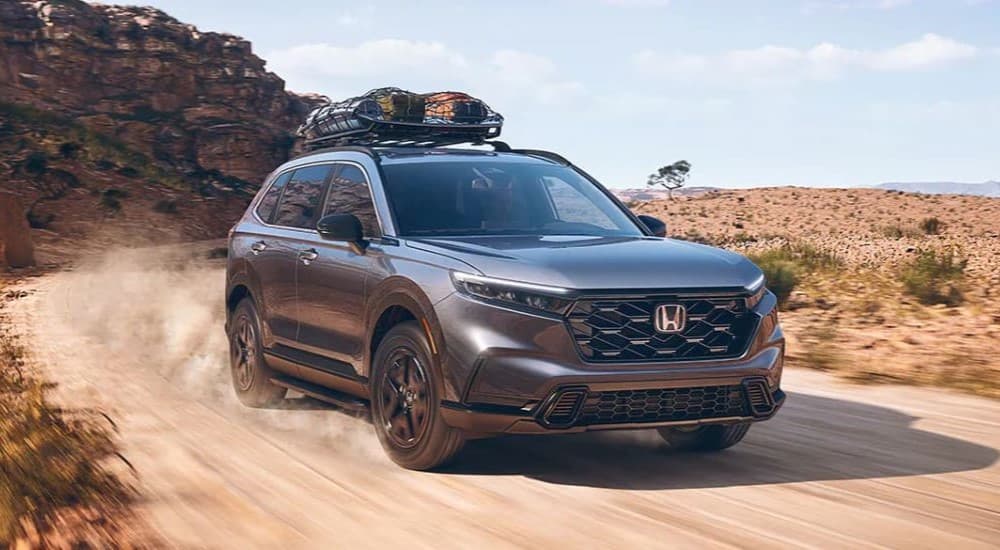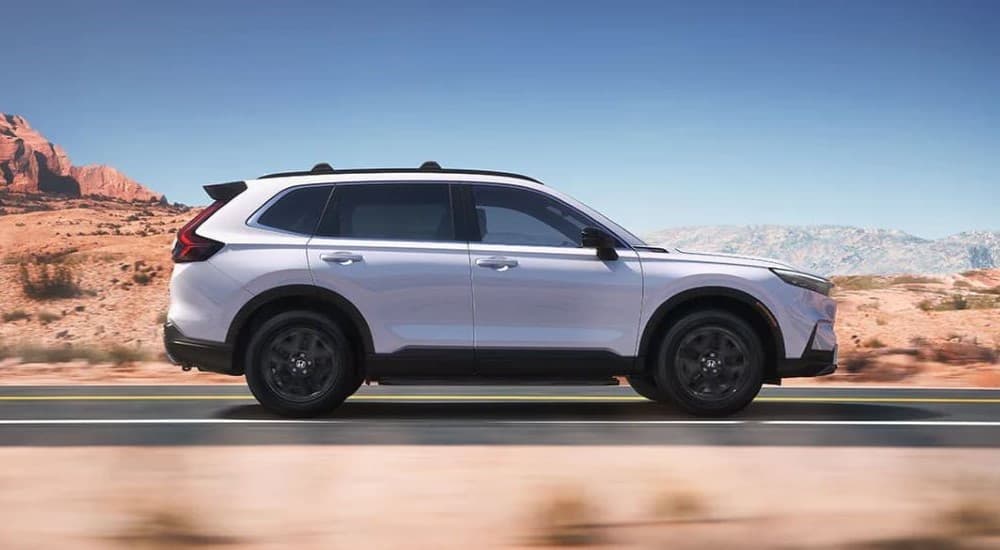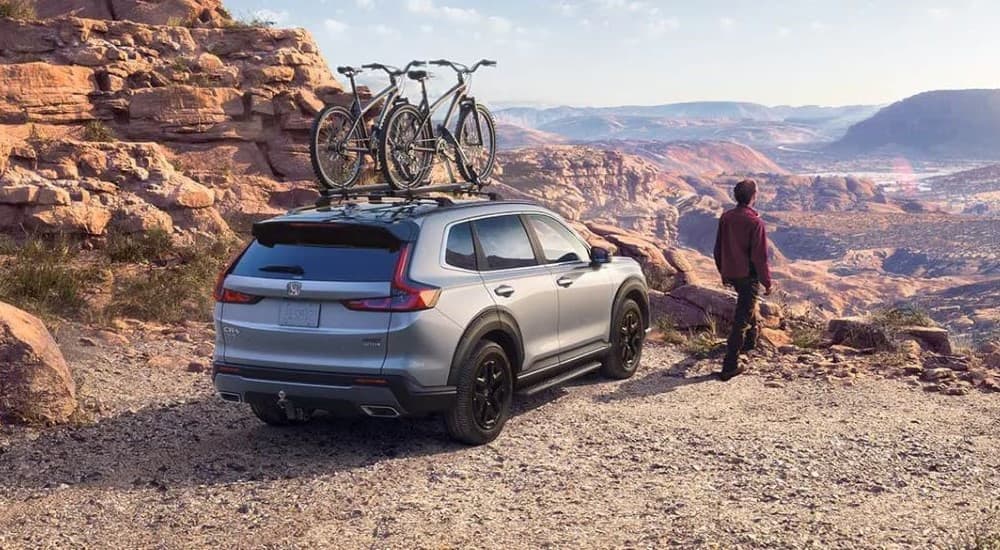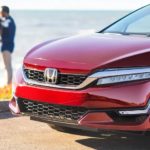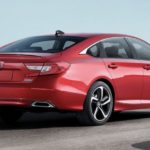Over the past twenty years, the hybrid vehicle has become a staple in the automotive industry, proving that a vehicle that runs on an alternative powertrain from that of the combustion engine can offer power and capability that not only rivals but even, in many instances, surpasses that of traditional gas engines. This year, Honda’s new 2023 Honda CR-V Hybrid promises to take the hybrid concept to the next level, claiming that this vehicle will give you more than any hybrid has offered previously.
It’s no secret that Honda has produced some of the most influential and innovative hybrids that have hit the market since the style’s conception. They have, arguably, set the standard for what hybrids everywhere should offer in terms of performance, efficiency, and style. Looking forward to the 2023 CR-V, which does look like it could be Honda’s highest and best realization of the hybrid powertrain’s potential, it seems fitting to take a look back on the strides Honda has made over the years with their hybrid vehicles, and how this brand not only streamlined the hybrid design but paved the way for hybrid standards in general.
Not the First, but Definitely Not the Worst
In the late 90s, when hybrids were first starting to come onto the scene, the talk throughout the automotive industry was about the possibilities of this powertrain, which was cleaner and more efficient than that of the gas-guzzling combustion engines utilized for the past hundred years. Though many of the most iconic vehicles in the automotive industry came out of the 80s, the high volume of large, inefficient vehicles that were no doubt bad for the environment had convinced many that it was time for a change.
A new kind of vehicle was needed that offered a cleaner and more efficient way of transportation. Was it Honda that initially answered that call? Well, actually, no, Toyota was. In 1997, Toyota released the first ever consumer-available hybrid vehicle, the iconic Toyota Prius. Though only available in Japan, this vehicle’s release represented the potential for the dream of a more efficient powertrain to become a reality. The Prius certainly did make it a reality, but it was only step one. The concept and pathos behind the Prius were excellent, but it had its drawbacks. It wasn’t the smoothest ride, it looked clunky, and poor shock absorption made rougher terrain impossible to traverse.
Leaders at Honda were paying attention to the Prius, and they thought they could compete with it by offering a vehicle that took the Prius’ great ideas and streamlined them into a more well-rounded design. More than anything, they wanted to offer it to consumers in the US. From the release of the Prius in 1997, Honda worked tirelessly to create their own hybrid model that could compete, and in 1999, its response to Toyota was released. The fruit of those labors, the Honda Insight, was compact, sleek, aerodynamic, and far more fuel efficient than the Prius. At this time, there was all sorts of chatter about the hybrid powertrain being the way of the future. The Honda Insight, which was met with critical acclaim, proved that the future of automobiles could be incredibly efficient but also look incredibly stylish. The Insight was heralded as a new vehicle for a new millennium.
Ever-Improving Innovation
The strides the Honda Insight made for the hybrid vehicle were vast, but this was still only the late 90s. The hybrid vehicle was still a new concept only in its infancy, and the leaders at Honda knew this. There were still many improvements to be made, and they knew it would be many years before the full realization of what the hybrid vehicle could be could come to the forefront. This reality did not stop them from improving and innovating their hybrid powertrain to the best of their ability, and they diligently did so with each passing model in the years to come.
In 2003, the Honda Civic Hybrid was released, which offered further improved fuel efficiency. The Honda Civic was a wildly popular car among consumers at the time, not only being one of Honda’s best-received vehicles but also being one of the best-selling vehicles worldwide to date, so the prospect of a Civic that offered the efficiency and cleaner powertrain of a hybrid was a welcome one indeed. The hybrid version of the Honda Civic earned the World Car of the Year Award in 2006 for “Greenest Car.”
Following the success of the Civic Hybrid, Honda began exploring the possibilities of creating hybrid versions of some of their other models. It seemed a fitting strategy to fit a vehicle that was already so beloved by consumers with this hybrid technology to give the people more of what they loved in a more efficient package. The Honda Accord Hybrid was the result, released in 2005 with across-the-board improvements from fuel efficiency to battery life, all in the modern, stylish Accord design that was already tried-and-true.
Honda didn’t stop their innovation there. Fitting established models with hybrid powertrains was certainly a good idea, but they wanted to create a unique vehicle with its own personality that stood out from the crowd. With the 2010 Honda CR-Z, that’s exactly what they did. The CR-Z was the most futuristic, technology-rich hybrid vehicle that had ever hit the market at the time. With its unbeatable fuel efficiency and defined, sleek exterior, it immediately grabbed the public’s attention. By 2012, Honda hybrids had sold north of a million models worldwide and were still going strong.
Just three years ago, in 2020, one of their most revolutionary models to date was released. The Honda Clarity featured the game-changing aspect of running on either its gas engine or electric motor independently of the other, able to switch between the two seamlessly. This truly allowed the vehicle to get the best of both worlds between gas and electric powertrains. Over the years, Honda has continued to produce hybrids that boast both power and style, solidifying hybrid vehicles no longer as outliers in the automotive industry but as the norm.
What the Future Holds
The hybrid vehicle’s history, specifically as it relates to Honda’s models, is marked by great strides of innovation for the automotive industry in general. Though these vehicles have earned their place as household names in that industry, their technology is still young. Remember, it’s only been twenty years since the conception of hybrid technology, so it stands to reason that there are still great leaps forward in the future.
This year, Honda’s next addition to its hybrid family promises the perfect amalgamation of strength, technology, and luxury with the 2023 Honda CR-V Hybrid. It is sleek and certainly their most technologically advanced hybrid ever, featuring incredible connectivity that further illustrates that Honda is ever in sync with the times, committed to always being at the forefront of modernity and cutting-edge tech.
Its interior is the most spacious and stylish yet, almost evoking the sense of driving a spaceship that can be seen in Star Wars more than driving a run-of-the-mill car. It promises the best fuel efficiency and power seen in a Honda hybrid yet. If all these things are proven true, the Honda CR-V Hybrid could be another staple in Honda’s already impressive family of hybrid models. For twenty years, Honda has made immense contributions to the automotive industry that solidify the notion that hybrids are the way of the future, and we’re still only on that future’s brink.
